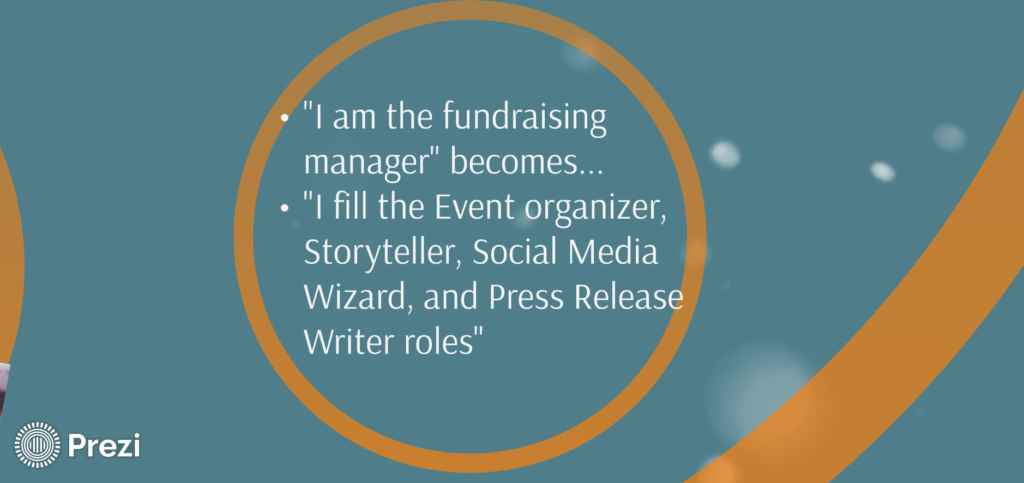what does the future of nonprofit leadership look like?
Your Executive Director is often the person who provides vision and direction; what happens when they leave?
Nonprofits—and in particular, small nonprofits—face a number of challenges when it comes to long-term sustainability. One specific challenge that both nonprofit executive leaders and staff looking for career advancement face is cultivating dedicated new leadership. As you grow, who will shape your organization’s mission, vision, and values? And with limited resources, how can you continue to deliver the greatest benefit to the communities you serve?
current challenges for nonprofits
- Limited funding makes it difficult to offer qualified individuals from outside your organization a higher salary
- Fewer opportunities for advancement means current staff may look elsewhere to build their careers
Raising the salary for the Executive Director position to attract qualified candidates can be difficult, if not impossible, on a nonprofit’s tight budget. And training an individual staff member to take on the role when your ED decides to move on (or retire) means putting all of your eggs in one basket. It also means that mentorship opportunities for existing staff are scarce.
While a number of your staff may be deeply committed to your cause, they may not see a clear path forward for themselves to become leaders at your organization. By the nature of nonprofit work, these folks are invested in making a difference but have personal needs as well. If they do choose to pursue other opportunities, your nonprofit will feel the loss of their expertise and connections within the community.
A new way forward: Worker self-directed nonprofits
With these issues in mind, a number of organizations are re-imagining what leadership looks like. Rather than maintaining the traditional hierarchical model where a single person holds the highest authority, they are activating the leadership skills that all nonprofit stakeholders possess. In this post, we’ll look at the example of the folks at the Sustainable Economies Law Center (SELC), who practice and advocate for “what you get when you cross a 501(c)(3) nonprofit and a worker cooperative:” the Worker Self-Directed Nonprofit.
What is a worker self-directed nonprofit?
The SELC defines a Worker Self-Directed Nonprofit as, “an organization in which all workers have the power to influence the realms and programs in which they work, the conditions of their workplace, their own career paths, and the direction of the organization as a whole.”
Focusing on workplace democracy
Within a Worker Self-Directed Nonprofit, every stakeholder is empowered to make important decisions that impact your nonprofit’s success.
In a traditional leadership model, the Executive Director exists at the top of the hierarchy. They are responsible for managing all important decision making and often have to work long hours to produce desired outcomes. With decision-making power concentrated in the hands of a single person, other staff have limited input. This can lead to bottlenecks and instability if there is turnover.
In contrast, the organizational framework of a Worker Self-Directed Nonprofit emphasizes mutual empowerment and peer accountability. Rather than approaching nonprofit work as circumscribed by a job title, stakeholders are encouraged to take on broader roles with more responsibility. For example, “I am the Fundraiser Manager” becomes, “I fill the Event organizer, storyteller, Social Media Wizard, and Press Release writer roles.”

Responsibility for key organizational functions is distributed across roles, with each person being responsible for their own work and having access to others who can provide them with input and guidance. Roles within the organization are distributed in such a way that everyone is behind a wheel, driving important decision making.
Increasing employee engagement
Greater responsibility = greater investment.
Even if you can’t increase salaries, letting all members of your nonprofit create work-life balance can lead to greater staff retention.
Giving everyone greater responsibility and decision-making power means they are more personally invested in their work. Beyond job responsibilities, all staff contribute to the shape of the workweek, what their daily hours are like, and compensation. Many who work in the nonprofit sector are already responsible for managing program budgets and must decide how to best distribute resources for the greatest impact. Within a Worker Self-Directed Nonprofit, these skills are brought to bear on how the nonprofit functions internally.
creating better outcomes
Bringing a diversity of perspectives to bear on important decisions can increase your impact.
The individuals at your nonprofit all have different skills and experience to offer. Embracing a more democratic, distributed ownership model can open up new opportunities to solve existing problems. Rather than competing for scarce leadership opportunities, they can contribute to a collective and shared vision. No longer will mentorship be limited to the free time of a single individual; it can come from peers, increasing the opportunities for learning and personal growth.
By putting this alternative model into practice, the folks at SELC have seen firsthand that it is possible to, “create organizations that are more effective at achieving their missions and much more satisfying for people to work in. We can embody an exciting, empowering, and equitable model of governance that will attract high-level talent and develop the leadership potential of an entire generation.”
Learn more about implementation
Could a cooperative model benefit your organization?
If you’re interested in learning more about democratic nonprofit governance, including ways to remain legally compliant, the SELC offers both information and training. Check out their powerpoint presentation that breaks down in detail how Worker Self-Directed Nonprofits function. They also provide legal workshops and assist organizations who are interested in shifting their leadership models. Visit their website to learn more.
What does leadership look like at your nonprofit? Do you feel invested in your work and that it’s sustainable in the long-term? Share your opinion in the comments!
Content from this piece was originally posted in Nonprofit Quarterly: The Future of Nonprofit Leadership: Worker Self-directed Organizations.




